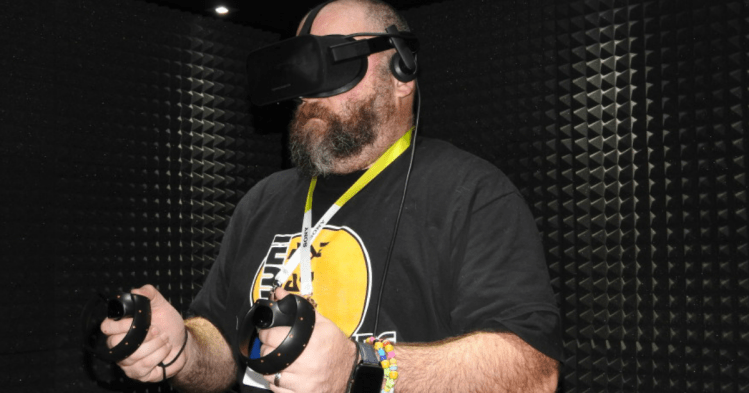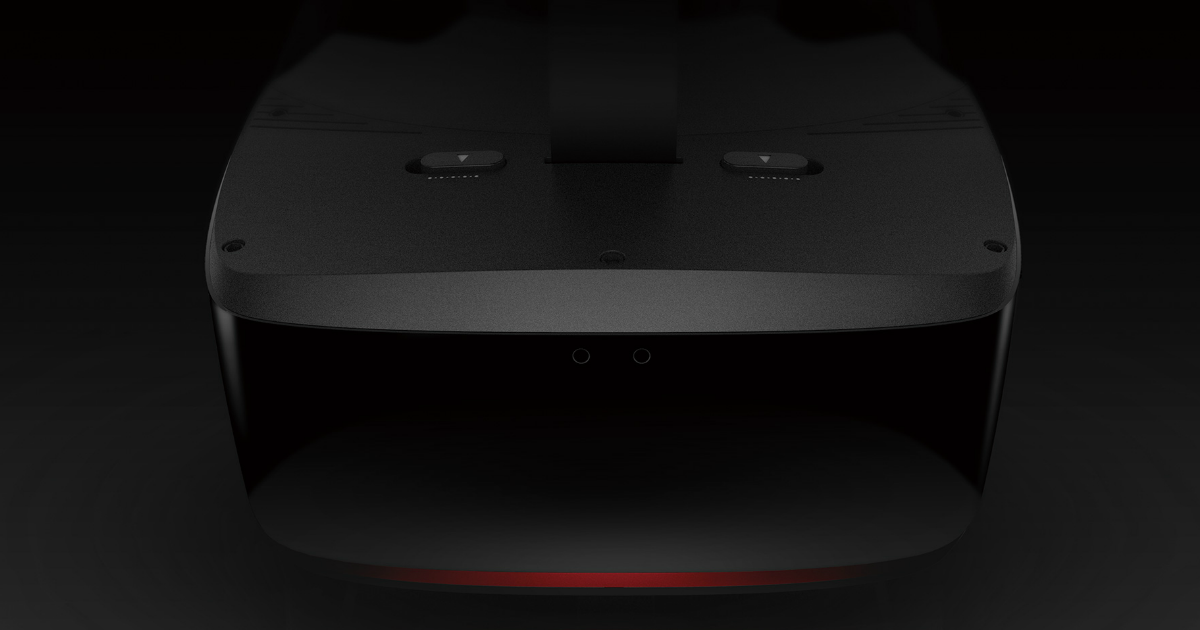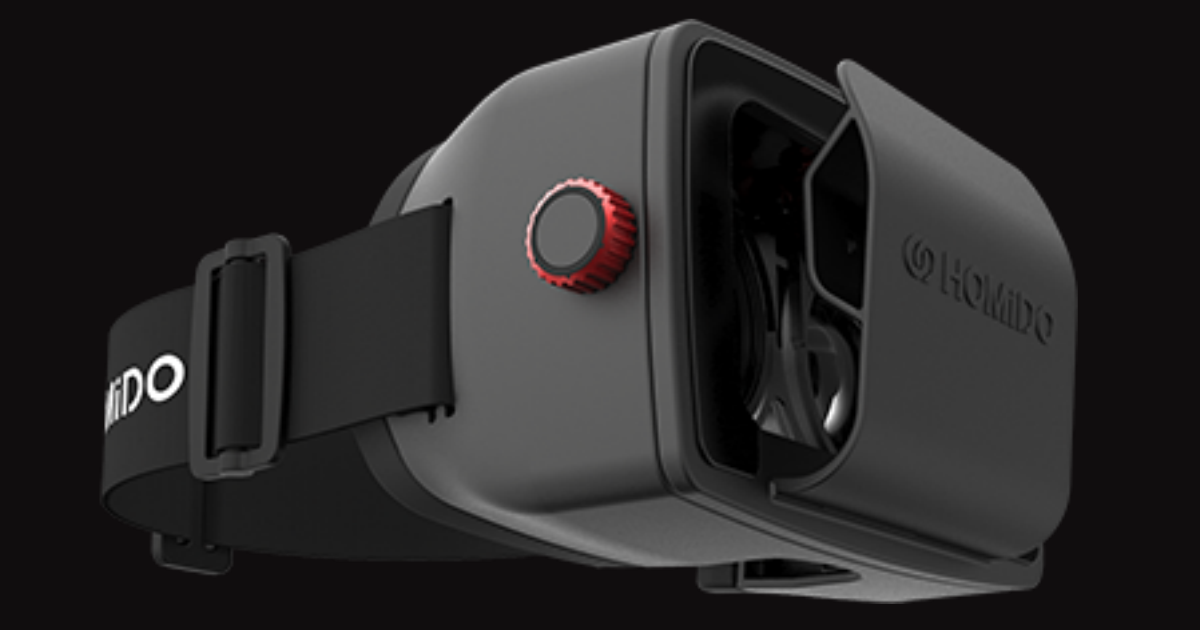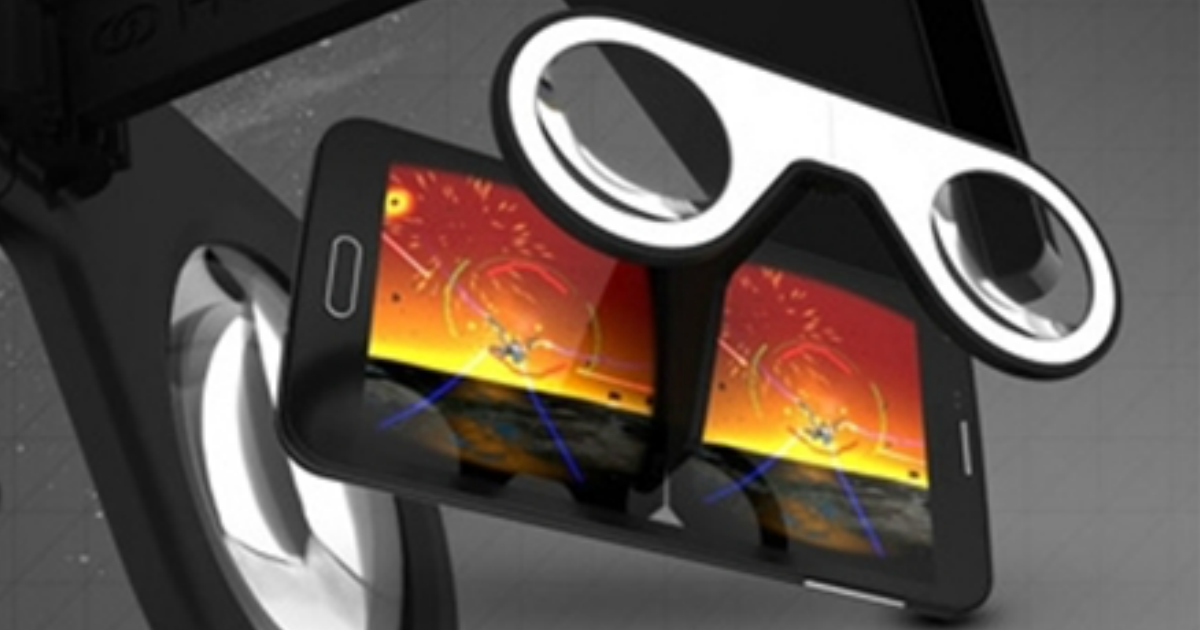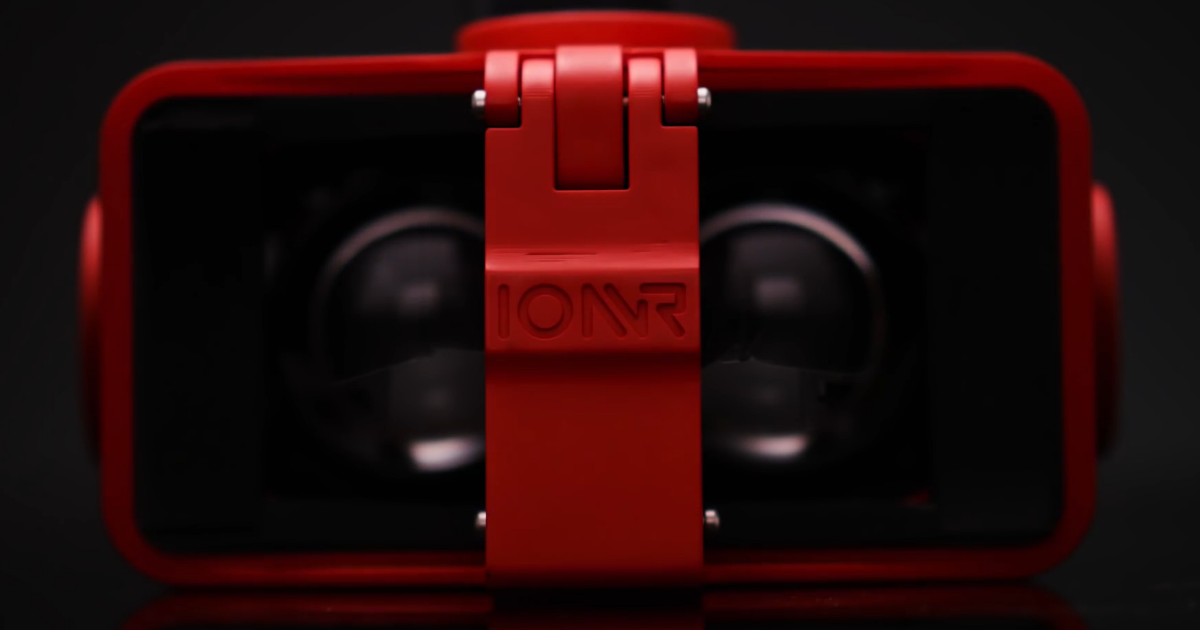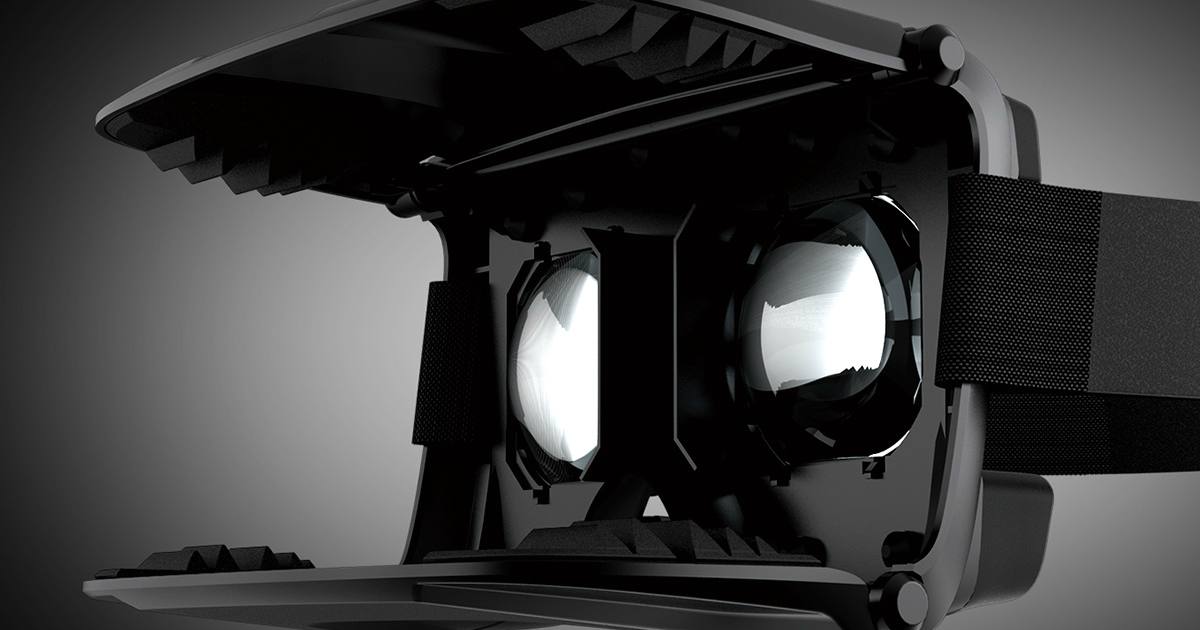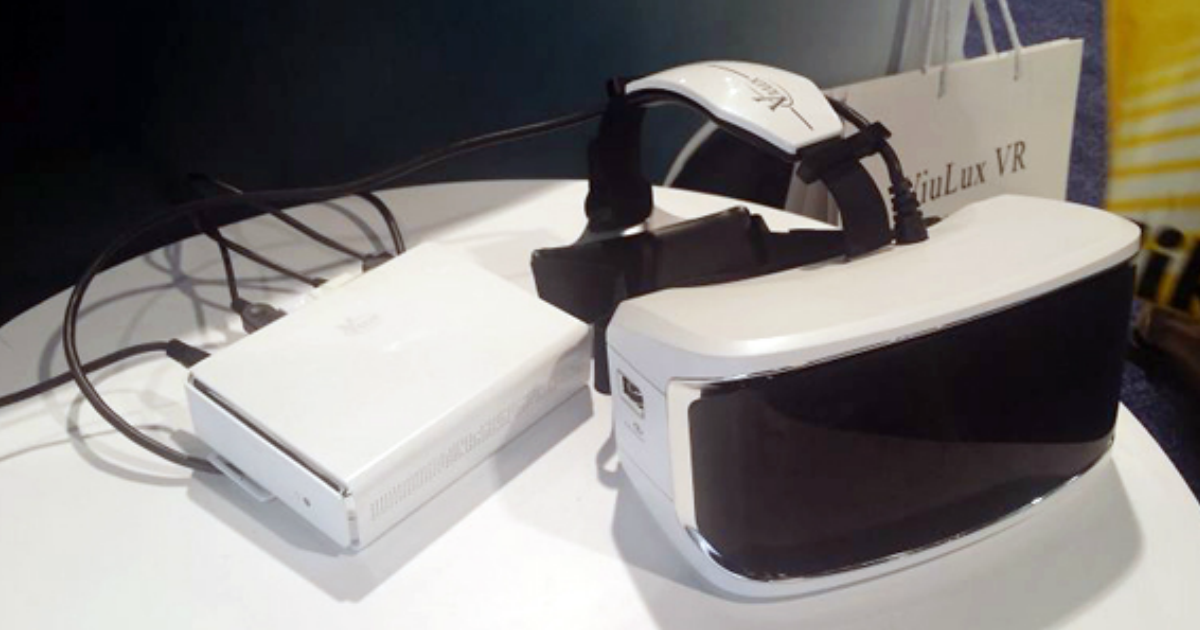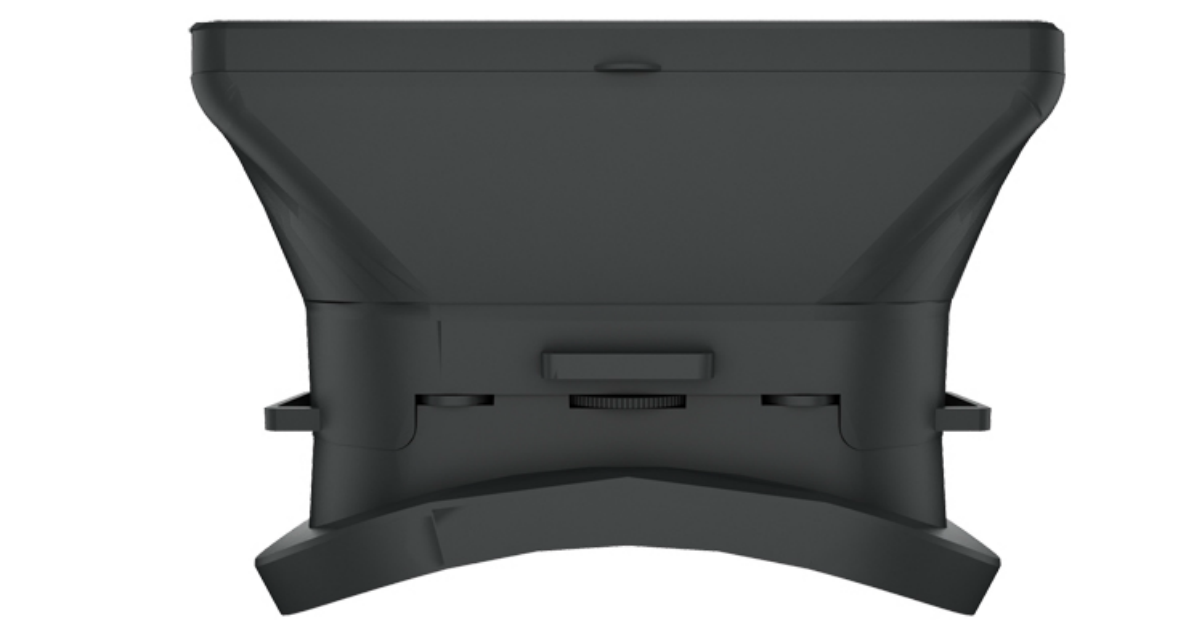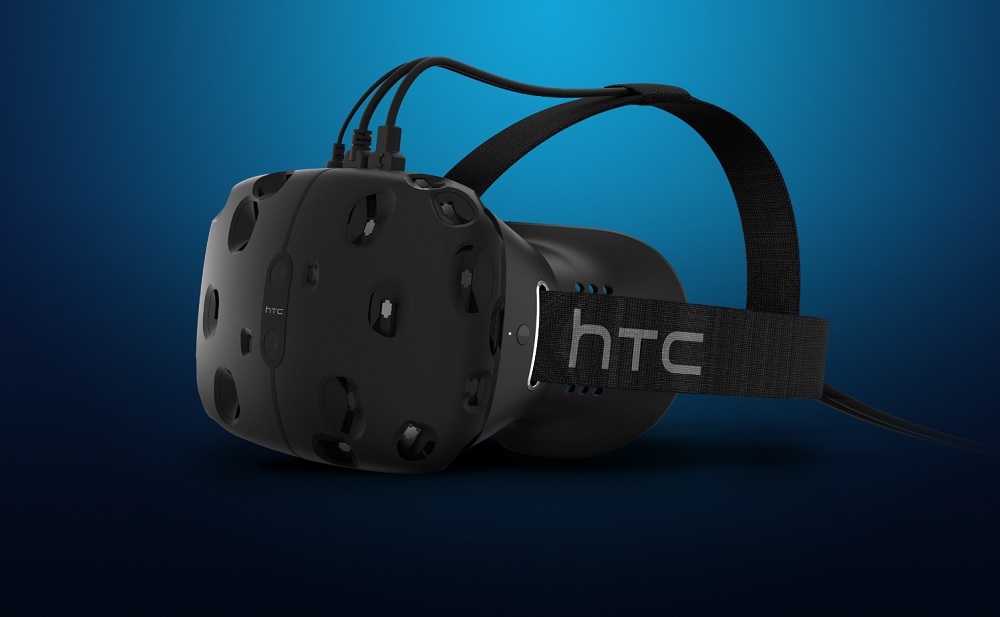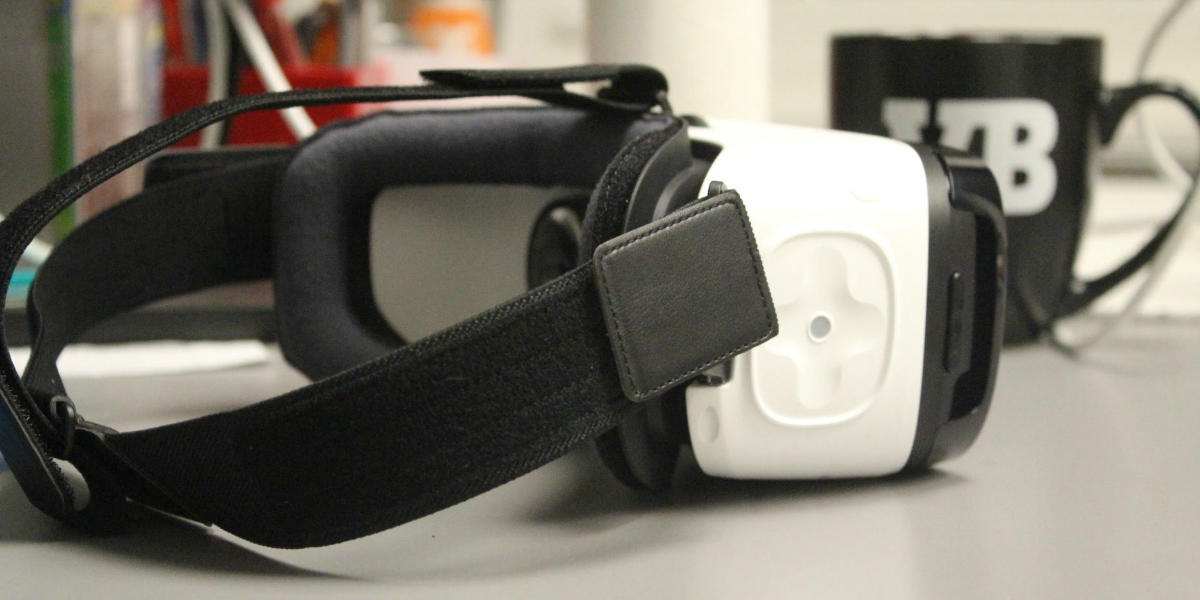As press at CES, you don’t so much cover the entire show floor like at other events, as much as you lay claim to a specific chunk of turf and roam that section for the entire duration of the show. If you’re lucky, by the end of the week you’ll have seen 1/10th of what CES has to offer. This year, seeing as almost no gaming stuff was going down at CES, I claimed the virtual reality section as my CES home away from home.
While roaming my surroundings, I ran into a ton of different mobile (used with a smartphone) and tethered (attached to a computer) virtual reality headsets. I didn’t have enough time in the day to get a full on demo of each one, but I could at least attach every chunk of hardware to my face and give it a quick fit n’ feel test. I’ve compiled a list of the ones that stood out the most.
Tethered Headsets
Oculus Rift ($600)
If I am going to cover a race, I may as well start with the dude everyone else is chasing. The commercial version of Oculus Rift uses a three strap system (one over the crown of the head, and two to the sides, joining In the back), with headphones attached to the side straps. The viewer looks longer than other units, but that doesn’t effect the feel of the goggles when they are on. The face gasket is made of a spongy material, which is important to note if you are prone to sweating (which I am) and are planning to share the headset with other people (which I am). The headset was not friendly to my larger-than-normal glasses, something that I find is a major problem with most headsets, but Nate Mitchell (VP of product at Oculus), assured me that there will be attachments in the future to accommodate big glasses.
Razer OSVR ($300)
Razer’s OSVR (Open Source Virtual Reality) headset also uses a three-strap system, with one strap over the crown and two on the sides. Unlike the Oculus Rift, it has separate headphones. The strap material on Razer’s OSVR is more of an elastic-like material, allowing them to stretch and fit over my head much easier. I prefer this style of material for headset straps over almost any other I saw at CES because I am allowed a bit of fudge factor when adjusting the size of the straps, where other, less flexible straps require getting dialed-in pretty close. The face gasket is spongy, which again creates a gross situation if you’re unlucky enough to use the headset after me. The gasket is also not friendly with my large glasses.
ANTVR Cyclop ($240)
The people at the ANTVR booth didn’t seem all that into allowing people to try out their tethered headset or their 3×3 foot virtual reality area detection (which uses infrared detection to locate shiny squares placed on the floor). Throughout the show, I saw the same guy wandering around a roped off virtual reality area with the Cyclop headset on while the rest of us gawked from the outside. It was like watching a human exhibit in an alien zoo where the staff was studying our obsession with virtual reality.
Before the show floor closed, I was able to talk them into at least slipping the headset on for a brief moment. The ANTVR Cyclop featured the good old three-pronged Velcro straps, which weren’t very stretchy. The viewing port, as per usual, was not good for my large glasses.
Mobile headsets
Homido Headset ($70)
Size wise, Homido had one of the most restrictive mobile virtual reality headsets on the floor. The viewing area is really tight and is meant to be used without glasses (large or otherwise). In place of glasses, Homido uses a special set of viewing cones designed to work with those that suffer with poor eye-sight.
The headset itself uses a folding clip to hold the mobile device, which the phone slides into from the top. The strap is stretchy elastic, which minimizes adjustment when putting the headset on.
Homido Mini ($15)
Homido also had a really cool, quick virtual reality product called the Homido Mini. The Homido Mini is essentially a caseless pair of viewing optics that clips onto a smartphone. Then I simply hold the phone up to my eyes, and I can get a quick and dirty virtual reality experience. It lacks the ability to shut the outside world out like walled-in headsets and cardboard-based viewers, but I like the idea of something that can display virtual reality quickly for when I want to check something out for just a few seconds.
IONVR ($230)
IONVR is the most expensive mobile virtual reality headset I ran into at CES, but supposedly that cost comes with some proprietary optical tech that smoothes out visual cues that cause motion sickness. I’m not privy to how that tech works, and IONVR wasn’t keen on sharing.
The headset itself is a red and black block that has a flat vertical swing arm that holds the phone in place, and a three-pronged, non-elastic strap with Velcro adjustment. The IONVR will support any iOS, Android, or Windows phone with a 4.6 to 6 inch screen and an accelerometer. As with most headsets, I couldn’t squeeze my large glasses into the unit.
ANTVR TAW ($25)
The one headset ANTVR did let me try out was their TAW mobile virtual reality unit. The TAW has one of the more versatile phone installations, in that it’s a sort of shelf system with two panels. One panel has different slots that will allow the phone to slide in, and the other panel clamps down and grips the phone.
The ANTVR TAW has only one strap, but it seemed comfortably tight and easily adjustable. The ANTVR TAW is one of the very few headsets at the show that allowed me to use it with my glasses on. This convenience comes with an obvious sacrifice in that there are no side walls to the viewing portion of the goggles. So the user only gets a virtual reality effect as long as they don’t pay attention to the real world in their peripheral vision.
ViuLux Smart VR (Unknown)
Small is the first word that comes to mind when I think of the ViuLux Smart VR headset. Both the three-pronged velcro straps and the viewport of this headset are not built for larger heads. With that said, it has a versatile mounting plate system, which snaps any virtual reality capable phone into the headset. ViuLux claims the mounting system supports most of the popular brands and models of mobile phone devices (which ones, exactly, I’m not sure).
Ihuaqi 3D VR Headset (Unknown)
A Chinese hardware manufacturer in a small booth at the side of the virtual reality and gaming section of CES 2016 wound up having one of the best mobile headsets of the show. Ihuaqi had a three-strap mobile virtual reality headset that supported large glasses, had both a foam and leather-like face gasket option, and a back lid that supported most mobile phone devices. It also had a horizontal pupil adjustment, so the optics will line up with the placement of my eyeballs in my skull. The 3D VR Headset also contained an input button, which would act like a finger touching the screen on the phone, while the phone is locked into the headset (which is mysteriously missing from a lot of mobile headsets at CES).
When I inquired about pricing and availability, the rep mentioned that the headsets were only a prototype, meant to show to clients interested in their manufacturing services.
I Am Cardboard DSCVR ($30)
I Am Cardboard’s DSCVR is a hard plastic alternative to the cardboard box virtual reality solutions. It’s a pretty clever piece of simple-yet-functional design, with the VR-capable phone being held on with a strap of rubber-like material and the face shroud sliding forward (it has no face gasket). The DSVCR also features an input button on the top, which will poke the phone’s screen for interactivity. The DSVCR has no straps, so the user is meant to hold the headset up to their face with one hand. It exists in that weird middle ground of headsets that are a bit more durable than straight cardboard solutions, but it isn’t meant to be a full-on headset. Also, for the record, my glasses don’t fit.
Bonus Round
HTC Vive (Unknown)
Lines to check out the HTC Vive were ridiculously long, and even if I had the time to wait all day, I had no guarantee that I would even get a demo, as show goers needed to make appointments (and they were often filled up by the time I got there). It’s suspicious to be missing from the list of tethered headsets, seeing as it is a major player in the marketplace, but it isn’t because I didn’t try.
Samsung Gear VR ($100)
I didn’t see much presence, if any, of Samsung in the virtual reality section outside of being used to show off virtual reality software. Part of that may be that this was their partner in crime, Oculus’, time to shine in the virtual reality marketplace. But if you want opinions on this particular headset, check out my review … what Dean’s grandmother thinks of it … and what my 5 year old thought of it.
VentureBeat's mission is to be a digital town square for technical decision-makers to gain knowledge about transformative enterprise technology and transact. Learn More
